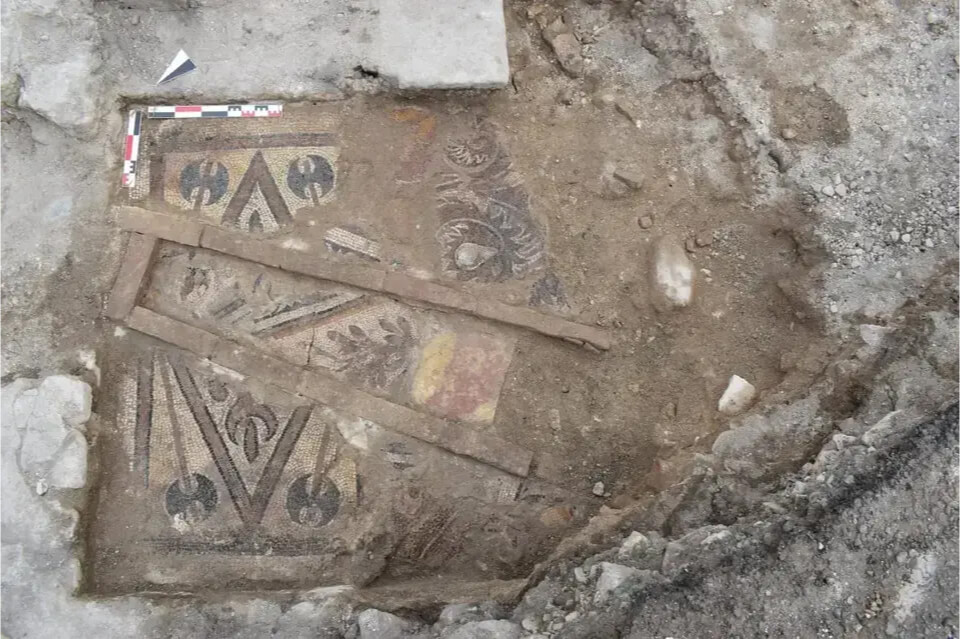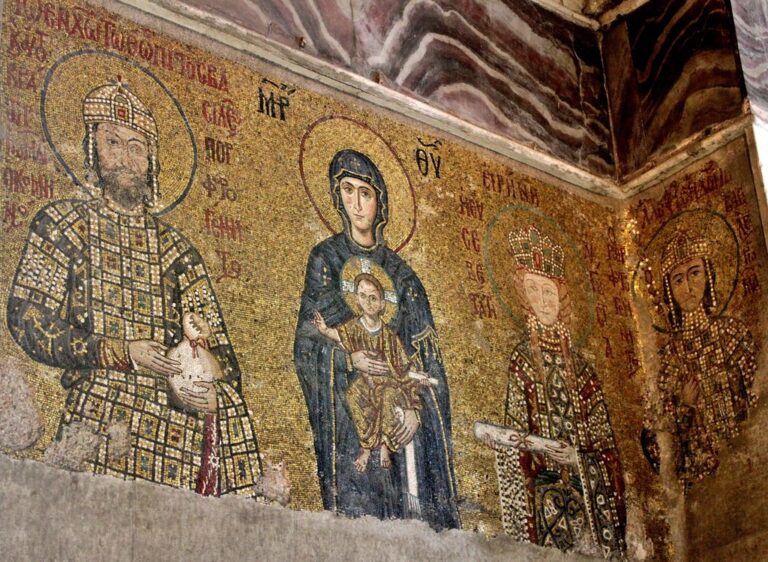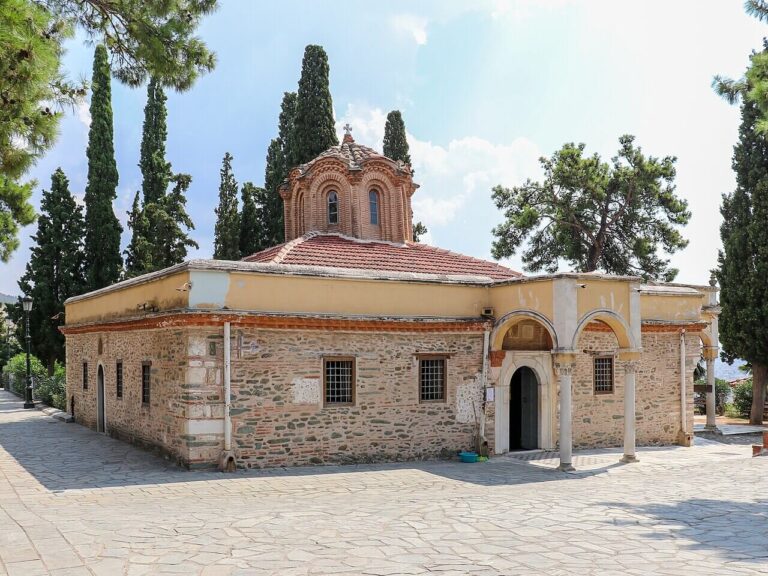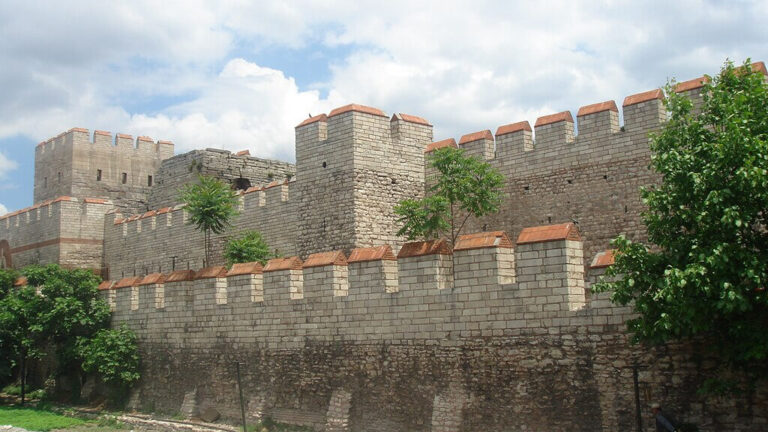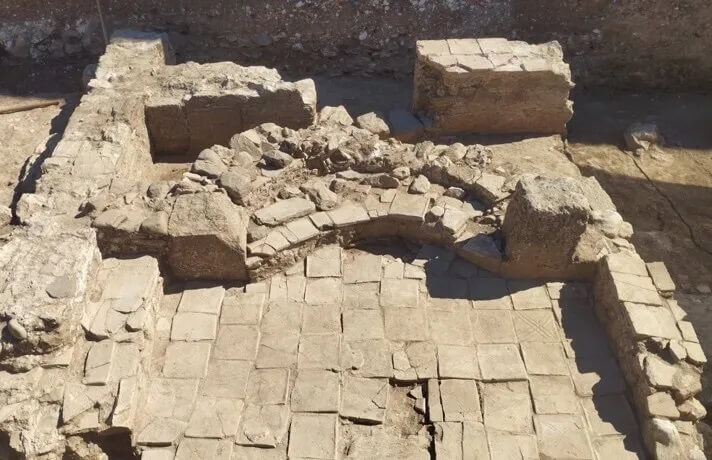Mosaic unearthed in the excavations of a byzantine monastery in Turkey
Archaeologists have unearthed a detailed mosaic while excavating a Byzantine monastery church dedicated to Saint Constantine and Saint Helena in Ordu province, Turkey. In 2021, 8 roman-era tombs were found during road construction work. During the rescue excavations, archaeologists noticed some other remains. Locals referred to this structure as a monastery, and the team could confirm that it was indeed a church associated with a monastery, connected to the ancient city of Polemonion (today Fatsa) located nearby.
The director of the excavations, Dr. Seçkin Evcim of the Department of Art History at Ordu University, stated that the initial construction of the church dates back to the early byzantine period, in the 5th or 6th centuries. However, the structure was probably later modified and used as part of a monastery complex which could have remained active during several centuries and served pilgrims and worshipers.
Historical records, documents, and traveler accounts helped scholars determine that this was a monastery church dedicated to Roman Emperor Constantine I (306-337)and his mother, Saint Helena. According to tradition, Helena discovered the True Cross during a pilgrimage to Jerusalem. Constantine I played a pivotal role for Christians by ending the persecution, and maybe becoming the first christian emperor. He also founded the new capital of Constantinople, establishing the base of the Byzantine Empire.

The excavations are ongoing, with the newly discovered mosaic being a significant find. Based on its style and form, archaeologists believe it dates from the 5th or 6th centuries AD, during the height of the Byzantine Empire under the Justinian dynasty. This era, while marked by prosperity, was also weakened by a devastating plague, which historians see as a precursor to the empire’s decline in the 7th century.

The mosaic features plant motifs, including curly acanthus intertwined with fruits and animal figures, reflecting early Byzantine artistic trends. Geometric patterns, such as rhombus shapes, are present, alongside panels depicting pairs of labryses (double-headed axes), symbols with deep roots in ancient religious practices. Though unusual for a Christian monastery, such decorations are consistent with other mosaics from the same period in Anatolia, showcasing the Byzantine artisans’ incorporation of classical Greek and Roman motifs.
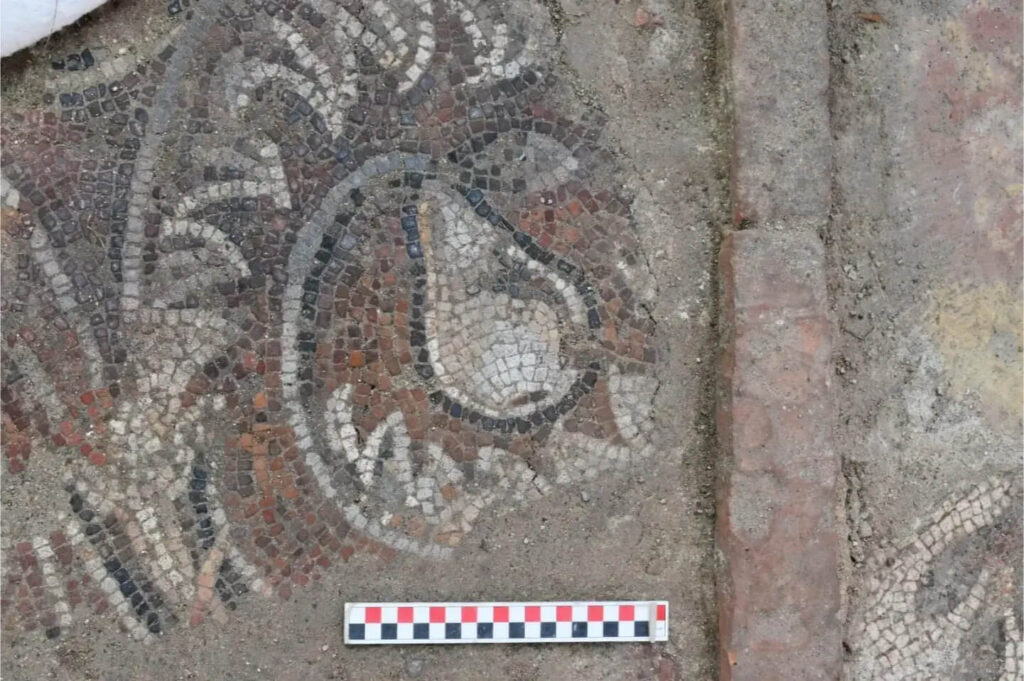
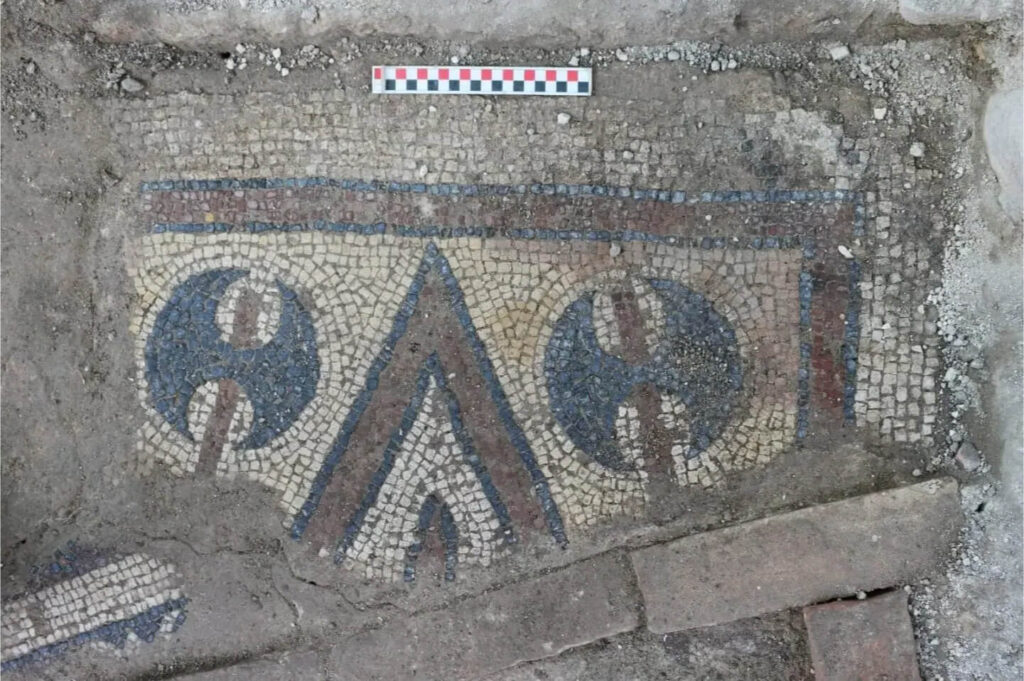
Byzantine mosaics, while building upon earlier Hellenistic and Roman techniques, introduced several innovations that transformed the medium into a distinct form of religious expression. These artistic developments had a lasting influence on Islamic art, particularly during the Umayyad and Abbasid Caliphates, and can even be traced through Ottoman art.
Photography credit : Ministry of Culture and Tourism of the Republic of Turkey
